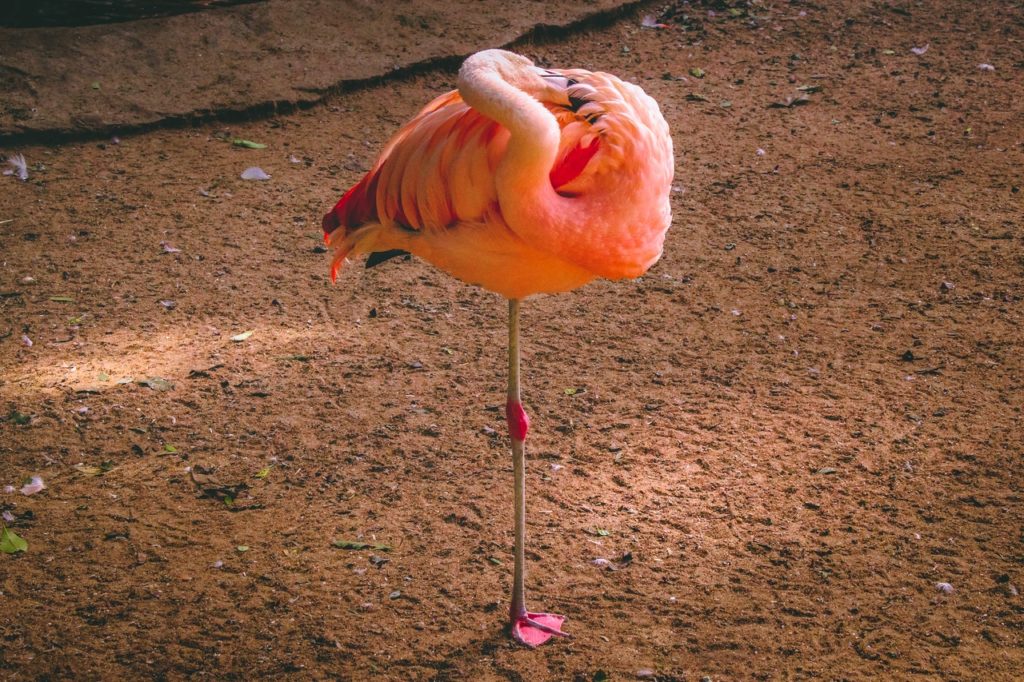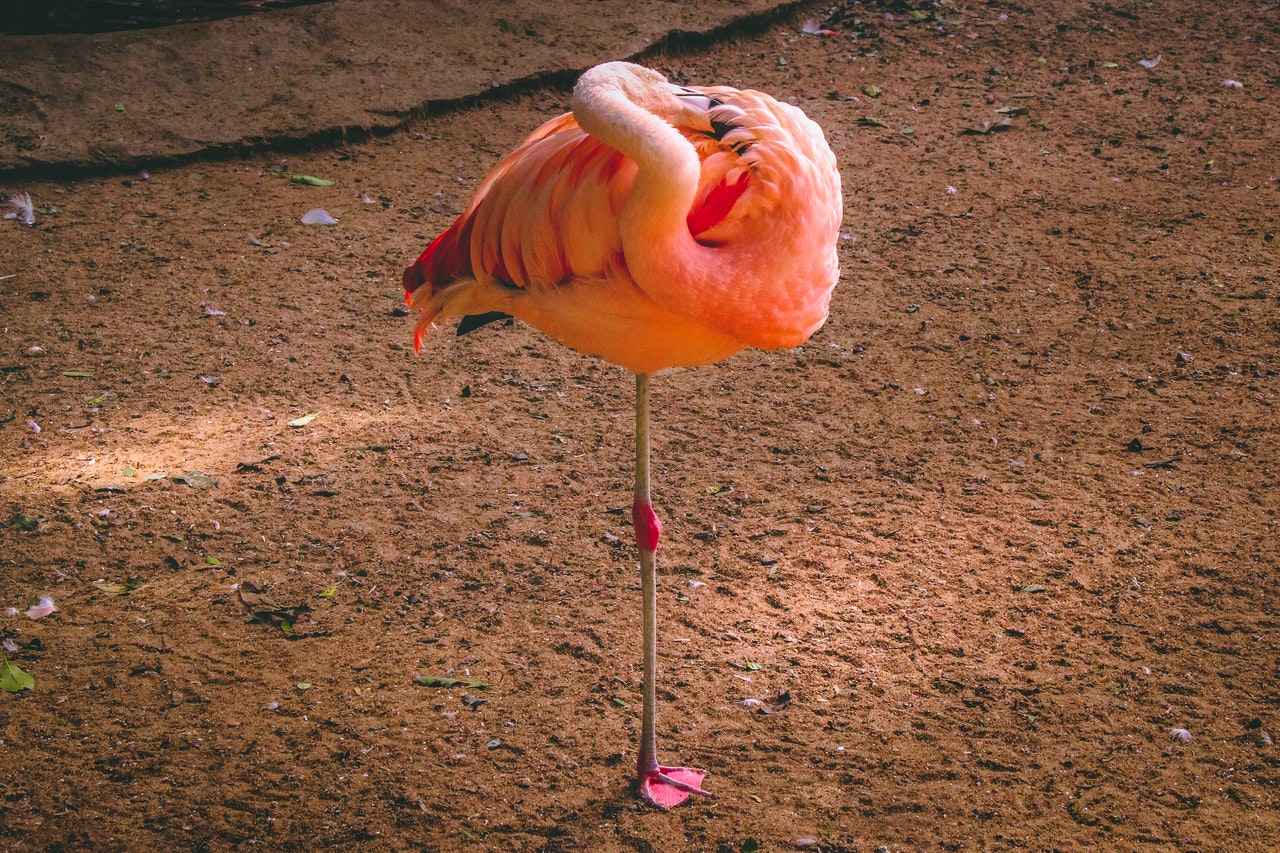
I learned this today. Animals can sleep standing up by locking a set of muscles and tendons in their legs, using gravity to lock a joint, or using a flexor tendon.
There are a lot of animals that can sleep while they are standing, but they can only do that through slow-wave sleep. To enter real REM sleep, they must lie down. Birds are the only animals that can completely sleep standing up.
Many mammals spend a lot of their sleeping time on all fours. These animals are all large prey animals. Giraffes, elephants, moose, and horses are some examples. The theory is that these animals have evolved the ability to sleep standing up because it would take them too long to get up off the ground if suddenly attacked while they were asleep. Lions generally won’t attack an adult elephant, but they might try if that adult elephant was asleep on the ground.
Another reason is that large animals run the risk of cutting off blood flow to their own organs and limbs if they lie down to sleep. Elephants can weigh up to 6 tons and that weight pressing on a leg could be dangerous.
So, how can animals sleep standing up? There are three methods that they use. The first is something called a stay apparatus. Animals in the horse family generally have a stay apparatus and it serves two purposes. It allows horses to rest their legs one by one and it allows them to sleep standing up. When horses relax their muscles, a series of tendons that run up their legs and into their shoulders keep their joints locked and keep them upright. A hooked structure on the femur connects to a tendon going over the knee, keeping the leg straight. They also use this system to rest their legs one by one. As we do, horses have to constantly adjust their muscles to stand up, and this is tiring. We cope by sitting down or taking the weight off our feet. Horses can’t do that, so they have evolved to lock their legs in turn, which rests the muscles.
The second method is achieved by placing a leg below the center of mass. This is how flamingos can sleep standing up. When one leg is placed directly below the flamingo’s center of mass, the weight presses down on the leg, locking the leg joints and the ankle joint in place. This is so effective that scientists were able to balance dead flamingos on one leg.
The third method is how most birds sleep standing up and stay on their perch. Most birds have a pair of flexor tendons in the backs of their feet that attach to another tendon in their leg. One of the tendons in the feet works the front three toes and the other tendon works the back toe. The tendons stretch over the ankle, and they open and shut when the ankle is bent. When a bird lands, it is straight-legged, and the tendons keep the feet open. Once they have landed, they bend their ankles and the tendons close their feet, gripping whatever they have landed on. These tendons keep them on their perches even when they are asleep and keep their legs ridged so that they can sleep standing.
So, these are the methods that most animals use to sleep standing up. However, birds are the only animals that only sleep standing. All of the other animals that sleep upright have to lie down to get REM sleep.
Different animals have different sleep requirements and most of them don’t need to get all of their sleep at once, as we do. They can break it up, getting small amounts of sleep throughout the day. This is an evolutionary advantage for any prey animal because it allows them to spend more time alert and on the lookout for predators.
Horses are a good example. Horses spend about two and a half hours of every day asleep. The majority of this sleep is slow-wave sleep, and they tend to sleep in chunks of about fifteen minutes. For all of their slow-wave sleep, they nap standing up, but they have to lie down to reach REM sleep. In REM sleep, all of their muscles relax, and even their stay apparatus won’t keep them upright. They only need to get about 30 to 40 minutes of REM sleep a day. This greatly reduces the amount of time that they are deeply asleep and vulnerable.
This pattern is common across the animal kingdom. Prey animals sleep in short bursts and they don’t need as much sleep as we do. They have far more slow-wave sleep than they do REM sleep. An interesting point is that animals in zoos sleep for far longer than animals in the wild. Elephants in zoos sleep for about eight hours a day, but elephants in the wild only sleep for about two hours a day. Sleep seems to be a luxury.
So, many large prey animals can sleep standing up for safety, but they have to lie down to enter REM sleep. And this is what I learned today.
Photo by Jonny Lew: https://www.pexels.com/photo/flamingo-standing-on-brown-soil-1250314/
Sources:
https://www.nationalgeographic.com/science/article/150711-animals-science-sleep-horses-bison-moose
https://www.sciencefocus.com/nature/how-many-animals-can-sleep-standing-up/
https://en.wikipedia.org/wiki/Stay_apparatus
http://www.todayifoundout.com/index.php/2014/10/birds-grip-things-sleep/
https://www.science.org/content/article/how-flamingos-sleep-while-standing-one-leg
https://herd.org.za/let-sleeping-elephants-lie-how-elephants-sleep/
https://en.wikipedia.org/wiki/Horse_behavior#Sleep_patterns

